Facing a bathroom with panels: how to get away from stereotypes
Facing a bathroom with panels can be not only practical, but also able to create an unforgettable interior. Most of our citizens believe that bathroom cladding panels are just plastic long material, which everyone has long been associated with budget repairs.
But this is far from the case, and we will try to prove it by proposing some interesting ideas for decorating the bathroom with panels.
The content of the article
What plastic panels can be used for the bathroom
Many do not even suspect that the lining of bathtubs with panels can be carried out not only using laminated plastic, but also in other versions. Although, since we are already talking about it, we hasten to assure you that with the help of long panels you can get a great design option.
- And you just need to combine the two types of cladding, but to create a contrast with the ceiling and floor - and already the interior looks completely different. In addition, the price of this material is the most affordable, and similar bathroom finish available to almost everyone.
- Such panels, as in the photo above, are material similar to a plastic board, with a width of 20-35 cm and a length of up to 3 meters. Inside, it is cellular (layered), which significantly reduces the weight of the lining.
The panels are connected to each other by the comb-groove method, and the installation is done on a wooden or metal frame. - Another type of long panels is a plastic lining. This material has a dense structure, and, accordingly, higher strength.
Their width usually does not exceed 10 cm, which makes these panels look like a lining board. Their principal difference from the previous version is the presence of castle joints. That is why plastic lining is also called PVC siding.
- The value of plastic, as such, lies precisely in the fact that it is completely not susceptible to moisture, which, as you understand, for bathroom is the most important. But, despite the affordable cost, many people prefer tiled wall decoration.
The reason for this is the widest range of colors, and, of course, the longer service life of ceramic tiles. - Manufacturers of polymer finishing materials did not want to put up with this state of things. Therefore, today for decorating bathrooms, you can use not only lengthy, but also sheet plastic. What is he like?
- These are flat interior panels with a relief surface, the size of 0.95 * 0.48m. They are made of high-quality plastic or fiberglass-reinforced polyester. Sold complete with universal edging and frieze, plus installation instructions.
- Each manufacturer offers the consumer a certain series of panels. For example: the Decocam series is a variety of imitations of natural materials. The Dekopan series has a mosaic surface, or imitates ceramic tile.
- Factory packaging is a pack of thirty sheets, plus a meter-long edging in the amount of sixty pieces. Frieze can be purchased separately, if necessary. The paneling of the walls of the bathroom, in this case, is carried out not by the frame, but by the adhesive method.
- The base sweat of such a finish, of course, should be even, which means that you need to either level the walls with cement screed, or sheathe them with cement-bonded tiles.
Such paneling for a bathroom it will cost more than in the case of long-length plastic mounted directly on the frame, but nevertheless, cheaper than tiles glued along the entire height of the walls. Yes, and the design can be thought of as extraordinary, taking, for example, two types of panels. - In general, the purpose of sheet plastic panels is not limited only to bathrooms, because their surface can not only be washed and cleaned, but also sprinkled with steam. Therefore, this material is also used: for interior decoration of food industry facilities; health and educational institutions; outlets; sports facilities.
- If your house has a spacious bathroom, why not think about how to design it using the now fashionable panels with 3D effect? They are produced not only from bamboo and gypsum, but also from polyurethane, which is also not afraid of moisture. The photo above shows a good example of such a design.
- If we talk about design, then for the decoration of one wall in the bathroom, you can use water-bubble panels. They also relate to polymeric materials, as they are made of acrylic glass or cellular polycarbonate. This material has a purely decorative function.
- The panel inside has a cavity that is filled with distilled water. At its base is mounted equipment that supplies air, due to which, in fact, bubbles form.
The intensity of the air stream can be adjusted. With good lighting, such a panel looks very original, and not only decorates the interior, but also contributes to the maximum relaxation of the person in the bathroom.
- Polycarbonate panels are cheaper in cost, but they also have a shorter service life. The decorative effect of the glass panel is much higher due to the high transparency of the material.
On such a panel, from the back, a film with any image can be pasted. If it is a winter forest, then the bubbles will imitate the falling snow, if it is an underwater world, it will seem to you that it comes to life. And how happy children are with this design!
And if volumetric panels are good only in a spacious room, then the air-bubble panel is suitable for decorating a small bathroom. Try and you do with your own hands something similar from what you see in the picture above, and a video on the topic will always help to cope with the work.
Gypsum cladding panels
The relatively new material gained great popularity in the decoration of interiors, including bathrooms,: gypsum-metal panels (GMP, or GML). Unlike giprok, the core of such a sheet is not enclosed in a cardboard, but in a metal shell.
Naturally, this is a more expensive material, since the lining of bathrooms with panels, in this case, does not require any finishing.
So:
- In the production of GMF, galvanized or stainless steel, aluminum can be used. The metal shell is decorated by spraying a polymer or polyester layer, painting, varnishing, powder coating.
In fact, this is a composite material similar to that used in the decoration of facades. Only there is not gypsum inside, but insulation. - The sizes of the gypsum-metal sheets vary: it can be either a square panel 60 * 60 cm or a sheet 0.6 * 4m; maximum panel thickness 13 mm. Facing the walls of the bathroom with gypsum panels, is not their only purpose.
This is an interior material, and it’s very beautiful, and is used both in the decoration of residential premises and in various public and administrative buildings. - Accordingly, for finishing a large object, the manufacturer can place an individual order with non-standard panel sizes. Looking at the picture below, you can evaluate the design of the bathroom using GMD. By the way, gypsum panels can be used not only for walls, but also for ceilings.
- Mount them on a frame, by analogy with other modular surfaces. That is, if it is a wall, the starting profile is mounted, then rack-mount, then transverse.
The step is usually standard, 60 cm, but may vary depending on the size of the panel. If it is a ceiling, then they mount a wall and ceiling profile, direct suspensions. In any case, the kit contains the manufacturer's instructions. - Installation can be done in an independent way. In this case, each panel can be removed if necessary, and the joints between them, thanks to special sides, are not visible.
The panels overlap each other and are fixed with one fixing screw on two panels. This method is ideal for mounting suspended ceilings. - And for walls, the stationary method is often used, when the panels are provided with spike-groove connections or metal locks, which can simultaneously be decorative elements. With this installation method, it is impossible to remove any panel separately. Moreover, at the end of the seams are filled with silicone.
Gypsum-metal panels are one of those modern materials that can compete with the time-consuming process of tiling the walls with tiles, painting, pasting. GMFs have unique qualities that put them one step higher than many finishing materials that have long become traditional.

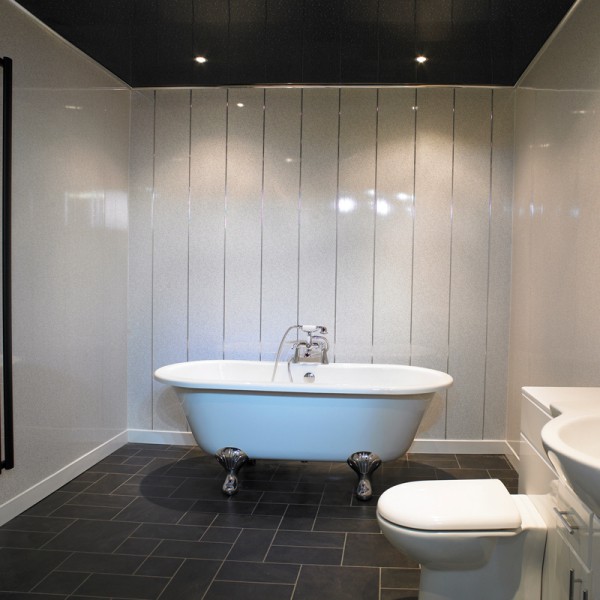

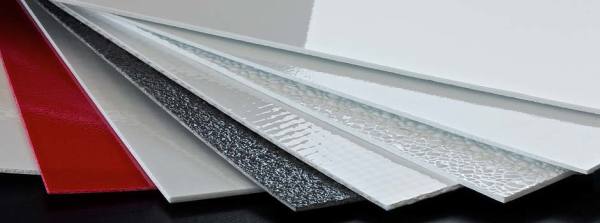
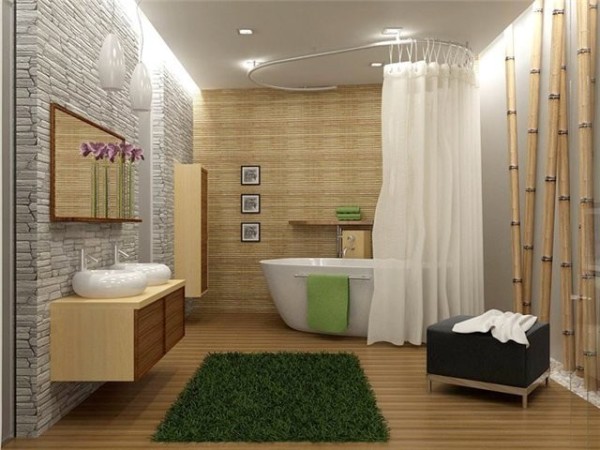
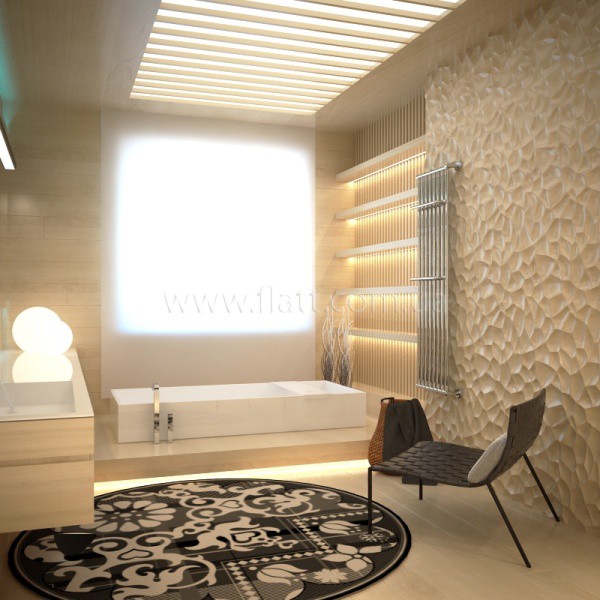
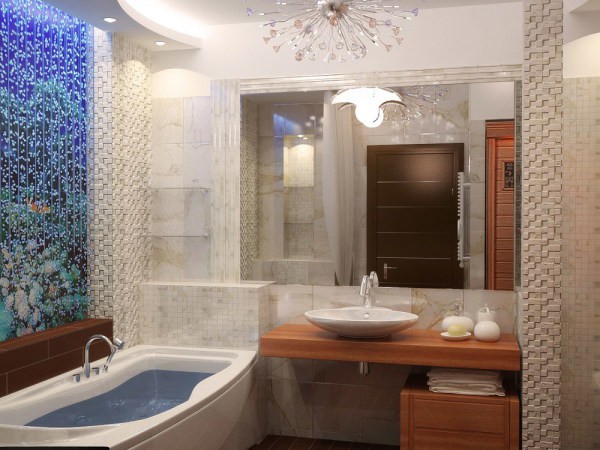
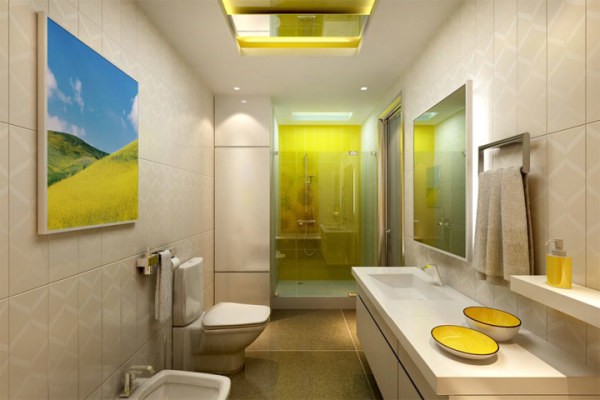

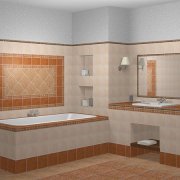
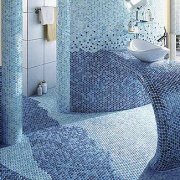
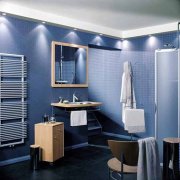
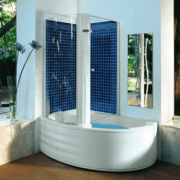

Facing a bathroom with panels is essentially a great solution. Moreover, the panel perfectly resists fungus and “holds” the hygiene of the room, and in terms of texture and pattern it is quite competitive in comparison with ceramic tiles.